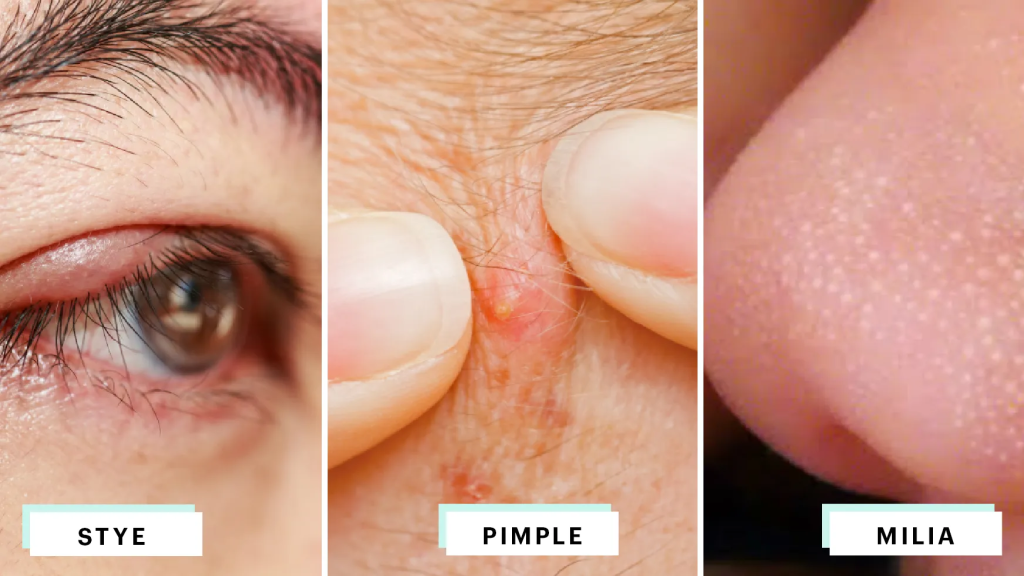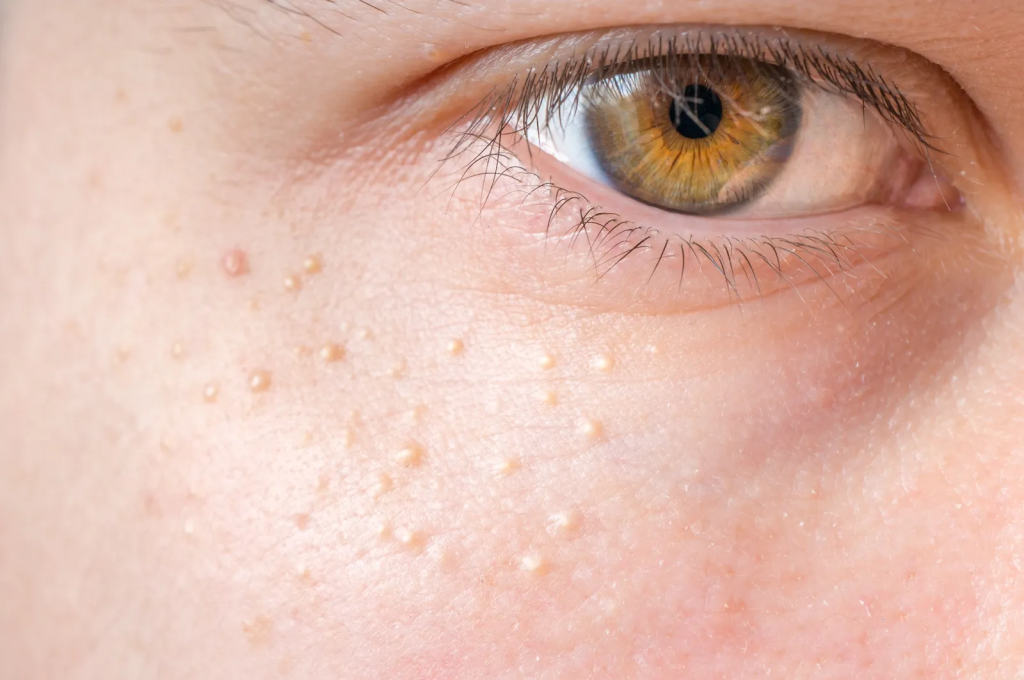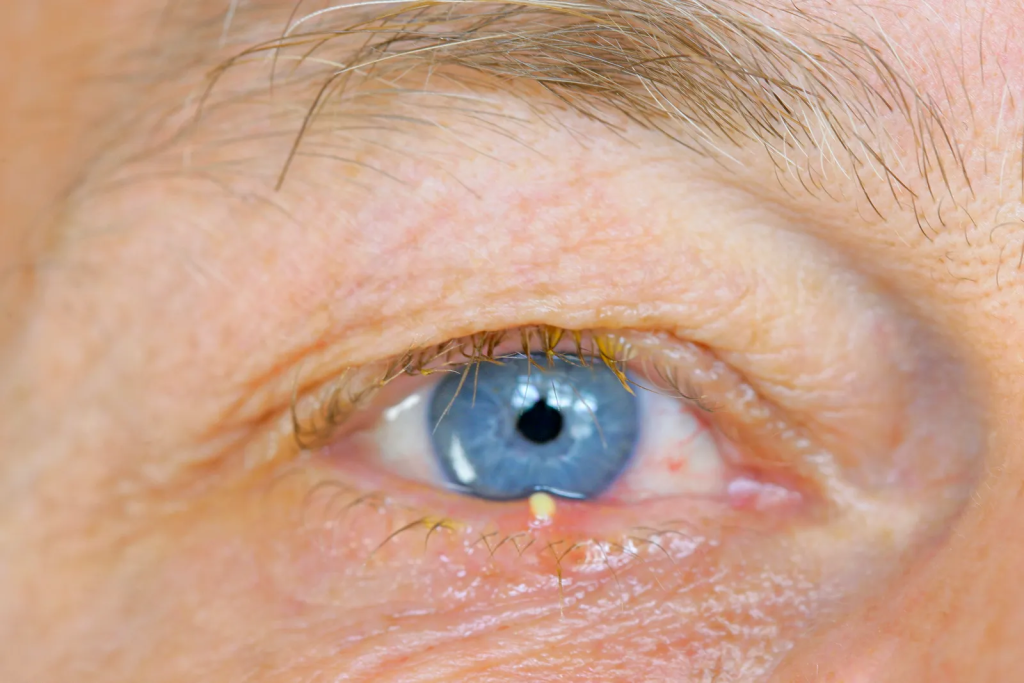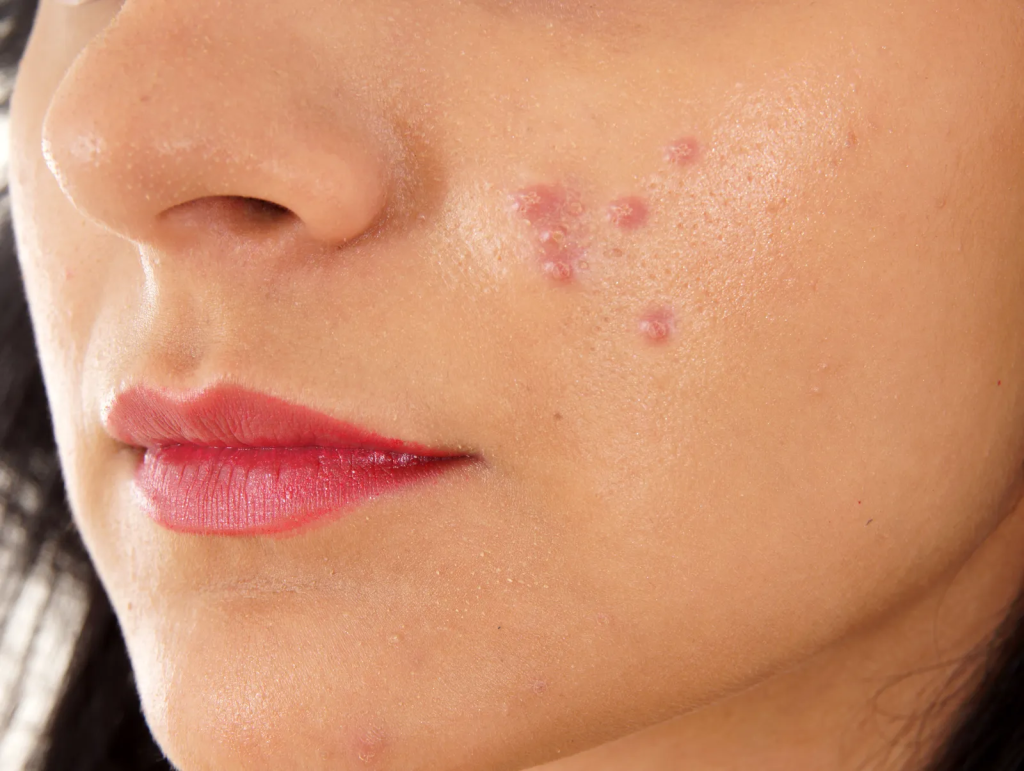
As we know from pimples and cold sores, some skin conditions can be difficult to tell the difference. When a red bump or pus-filled pustule appears, we tend to automatically assume it’s a form of acne and treat it as such—or we just wait and pray it goes away. But in reality, red bumps can be caused by a variety of things, including the cold sores mentioned above. Therefore, it is important to understand the problem you are dealing with in order to treat it correctly.
Take styes and milia, for example. Both are common skin problems that are often confused with pimples or other forms of acne (such as whiteheads) due to their flawless appearance. Since these three conditions are so similar in appearance, we reached out to some trusted dermatologists to get a clear diagnosis of styes, papules, and milia—and learn how to effectively prevent them.
Milia

Miliary syndrome is a disease characterized by tiny, painless white bumps around the eyes. They are often confused with whiteheads. “Milia are tiny cysts that arise from the sweat ducts, made of keratin, and located just beneath the skin,” says dermatologist Neil Sadick, founder of Sadick Dermatology in New York City. Typically they are solid, white and one to two millimeters in diameter, he said.
Milia are most common on the face, occurring around the eyes and on the cheeks, says Joshua Zeichner, director of cosmetic and clinical research in dermatology at Mount Sinai Hospital in New York City. Sadiq said miliary disease can affect people of all ages, but is common in newborns.
While milia can develop spontaneously or as a secondary event during the healing process from burns, lasers and microdermabrasion, other factors such as genetics and the use of highly occlusive cosmetics can also contribute to papule formation, Zeichner said. What are the most common causes of miliary disease? Adam Friedman, director of the residency program at the George Washington University School of Medicine and Health Sciences in Washington, D.C., said exposure to the sun damages the skin’s supporting structures due to ultraviolet radiation, opening pores and trapping keratin. Under the skin, tiny white nodules form.
Similar to acne, milia can be treated with topical retinoids. However, Zeichner recommends seeing your doctor for best results. “[Milia] need to be opened by a dermatologist because they usually don’t go away on their own,” he says. This involves making a small incision in the skin with a super-sharp sterile blade and then squeezing it until the residue inside comes out. (Illustration, right?)
Stye

Unlike milia and papules, styes specifically affect the eye area, often appearing on the extremely sensitive edges of the eyelids. “A stye is a tear duct that becomes clogged with dead skin cells, keratin, and oil,” says Friedman. Additionally, unlike milia, styes can be very painful, which is why some people mistake them for pimples or pimples. However, this is not the case, and styes should not be treated with topical tretinoin or any medication.
Friedman says a stye will usually go away on its own within a few days, but if you want to speed healing, applying heat is your best option. “Hot compresses can soften and enlarge the ‘pores,’ allowing the blockage to pass,” he explains. Sadiq recommends compressing the area up to four times a day.
Pimple

When it comes to acne, most of us are likely already prepared, but for those of you who are unfamiliar, here’s a quick breakdown. Papules are caused by clogged sebaceous glands, which sounds similar to the development of a stye. But unlike styes and milia, papules can appear almost anywhere on the body, Zeichner says. “Acne usually occurs on the face, but the chest and back are also commonly affected,” he says.
Acne can be caused by a variety of factors, such as: excessive oil production, sticky cells clogging gland openings, harmful bacteria, and hormones. Friedman also adds that pimples are caused by inflammation. “This inflammation causes increased oil production, causing the lining of the hair follicle to grow too quickly, which in turn causes the surface of the skin to become clogged and ultimately [damage the sebaceous glands], which results in a giant pimple,” Friedman explains.
Treatment options for papules vary and include topical tretinoin, antihormonal therapies (such as spironolactone), and sulfur-based products with antibacterial and anti-inflammatory properties. (We love the Peter Thomas Roth Therapeutic Sulfur Mask, which uses sulfur to heal and prevent breakouts from developing.)
Although milia, styes, and papules share some similarities in appearance, they are very different in their causes and treatments. If you think you may have any of these conditions, make an appointment with your doctor to find a solution that’s right for you.